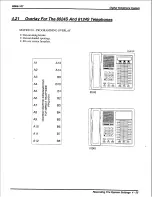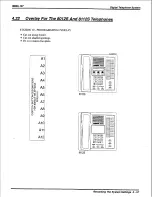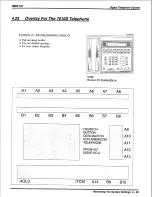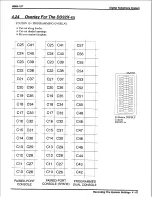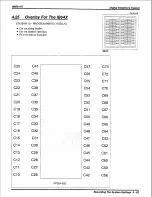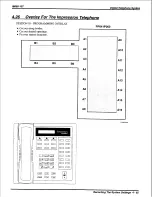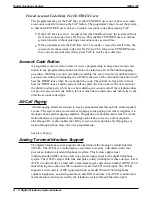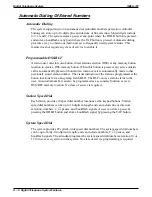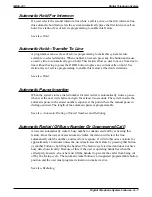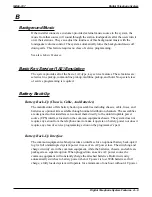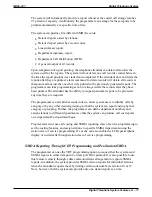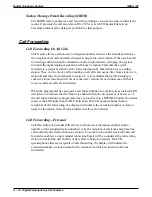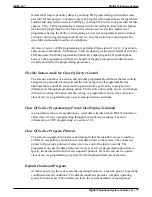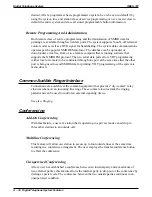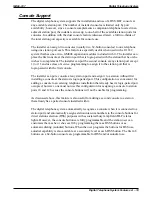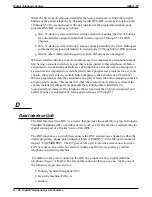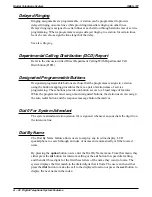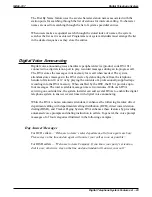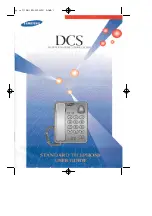
Automatic Station Relocation
With this feature, the system will automatically recognize a particular station should that
station be relocated to a new station port. When someone places a telephone at a new port
location, it will continue to provide the same class of service parameters and respond to
the same extension numbers as it did at the original station port. A programmer must
enable this system feature using system class of service programming. As an added
feature when someone plugs an LCD speakerphone in a new station port, the system will
prompt the user on the display to verify the relocation of features.
Auxiliary Equipment Interface
An installer can use the auxiliary equipment interface to connect a telephone device or a
data device to an outside line ahead of the common equipment. The system can detect an
off-hook condition in a device that an installer has connected to the auxiliary equipment
interface, and turn on the status light for that line at telephones that have that line
appearance. It does this to indicate that the line is busy and not available for station use.
Auxiliary equipment interface connections provide connections to lines 2 and 4. A user
cannot interrupt an external device by pressing the line button unless the line has been
programmed to be non-private.
Auxiliary Ringer Interface
The auxiliary ringer interface provides “dry-contact” relay closures which track the
ringing pattern whenever the system sends ringing to a programmable destination.
Programmers can program relay control to be activated when the system sends ringing to
station port 17 or to the paging port.
When programmed for station port 17 ringing, an installer often uses an external device
to provide loud ringing. When programmed for paging port ringing, an installer often
installs an external paging amplifier to sound the rings. The system supplies ringing tones
to the paging port along with the relay closures. It can send the ringing tones to the input
of an external paging amplifier and the installer can arrange the wiring so that the relay
closures energize the paging amplifier while it is receiving the ringing tone. Use system
class of service programming to choose either the paging port or station port 17 for the
ringing port relay control. Also use system class of service to determine the type of
ringing sent to the paging port. Use station class of service programming to determine the
type of ringing that the system sends to station port 17.
Programmers can arrange for the system to send ringing tones for particular lines
through the PA port. They can choose between intercom tone and DTMF signaling tone
for the PA port ringing. They should choose the intercom tone if they desire a soft tone
and the DTMF tone if they desire a loud tone.
See also, Ringing.
Digital Telephone System
IMI66–107
A – 8 Digital Telephone System Features
Summary of Contents for Air Impact DSU
Page 2: ...Printed in U S A GCA47 157 ...
Page 30: ......
Page 112: ......
Page 192: ...Digital Telephone System IMI66 107 3 80 System Programming ...
Page 283: ......
Page 284: ......
Page 285: ......
Page 286: ......
Page 287: ......
Page 288: ......
Page 289: ......
Page 290: ......
Page 291: ......
Page 292: ......
Page 293: ......
Page 294: ......
Page 295: ......
Page 296: ......
Page 297: ......
Page 298: ......
Page 299: ......
Page 300: ......
Page 301: ......
Page 302: ......
Page 303: ......
Page 304: ......
Page 305: ......
Page 306: ......
Page 307: ......
Page 308: ......
Page 309: ......
Page 310: ......
Page 311: ......
Page 312: ......
Page 313: ......
Page 314: ......
Page 315: ......
Page 316: ......
Page 317: ......
Page 318: ......
Page 319: ......
Page 320: ......
Page 321: ......
Page 322: ......
Page 323: ......
Page 324: ......
Page 325: ......
Page 326: ......
Page 327: ......
Page 328: ......
Page 329: ......
Page 330: ......
Page 331: ......
Page 332: ......
Page 333: ......
Page 334: ......
Page 335: ......
Page 336: ......
Page 337: ......
Page 338: ......
Page 339: ......
Page 340: ......
Page 431: ......
Page 436: ......
Page 437: ......
Page 438: ......

